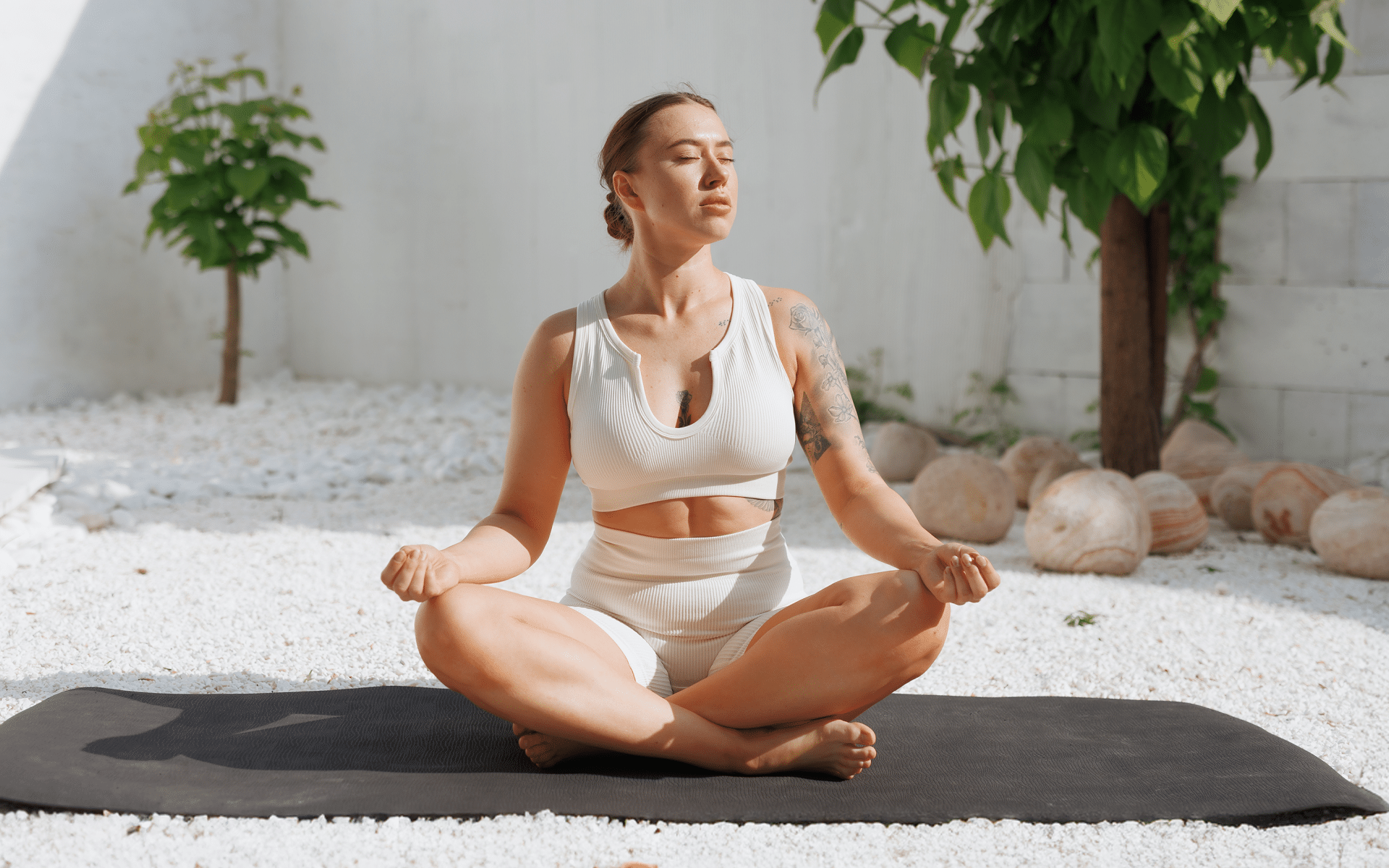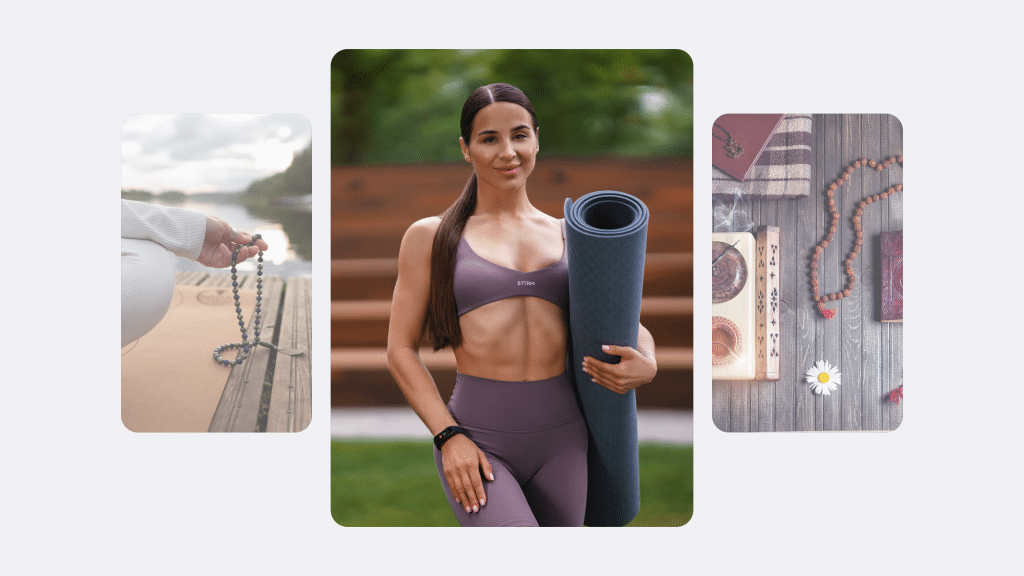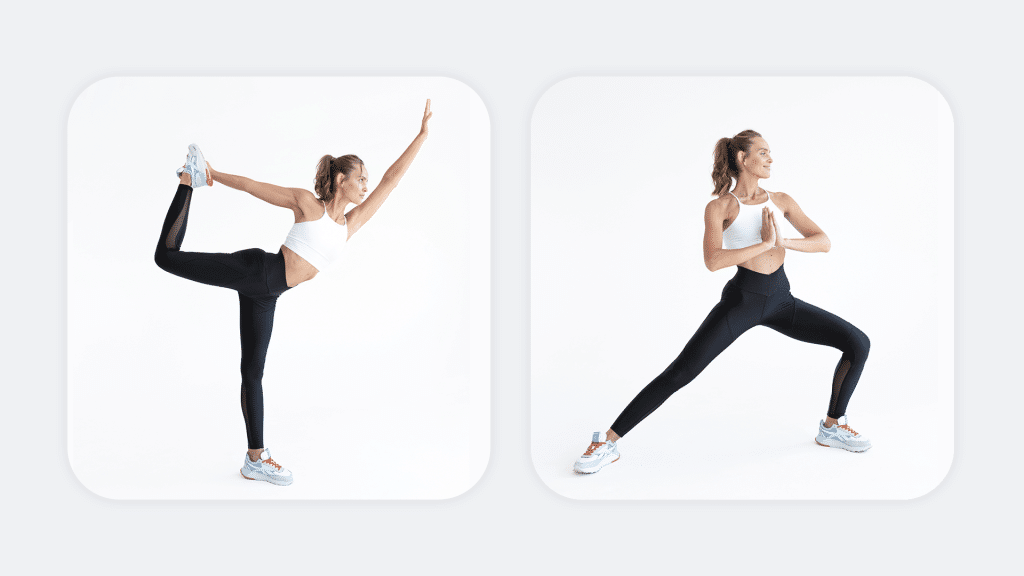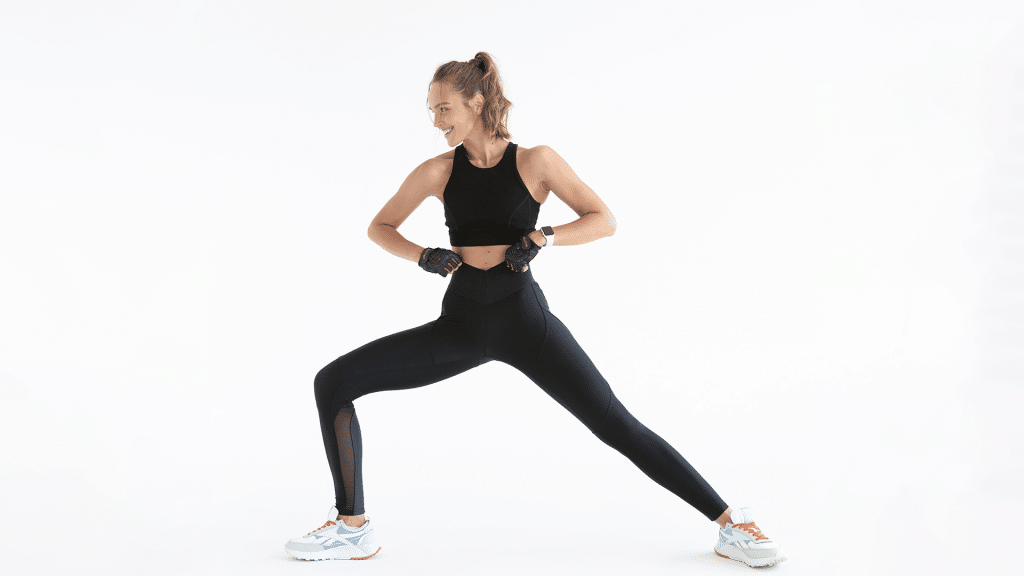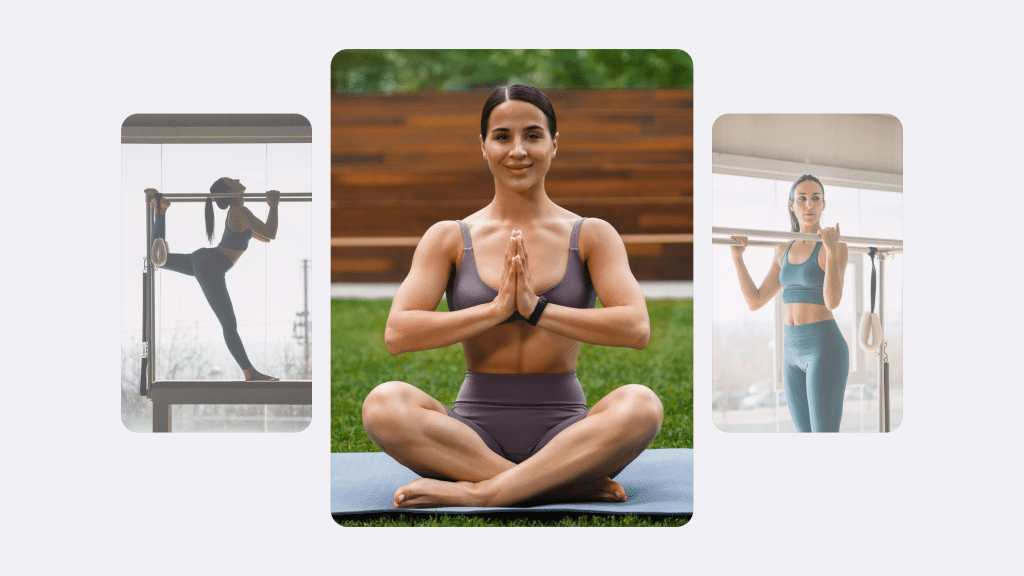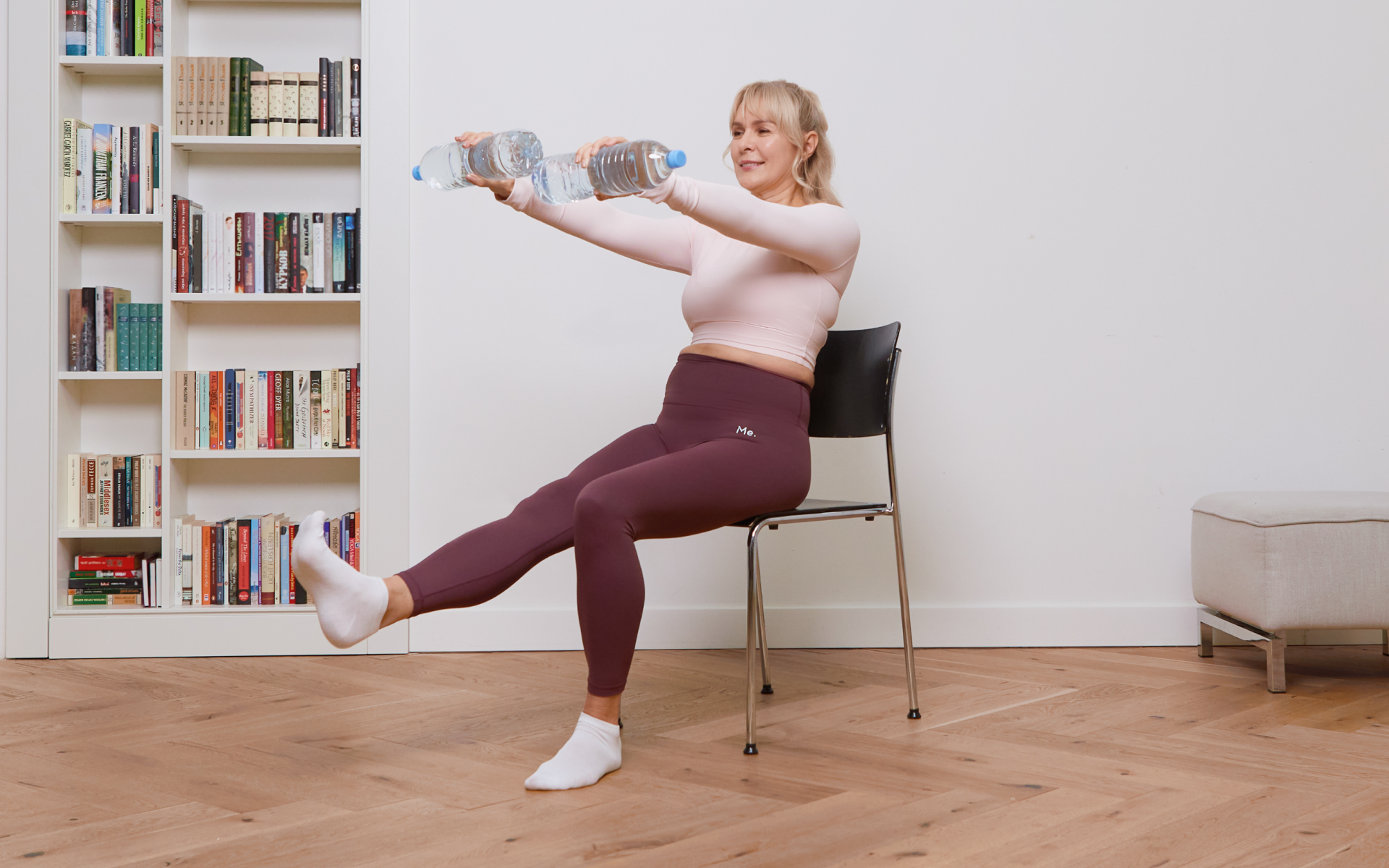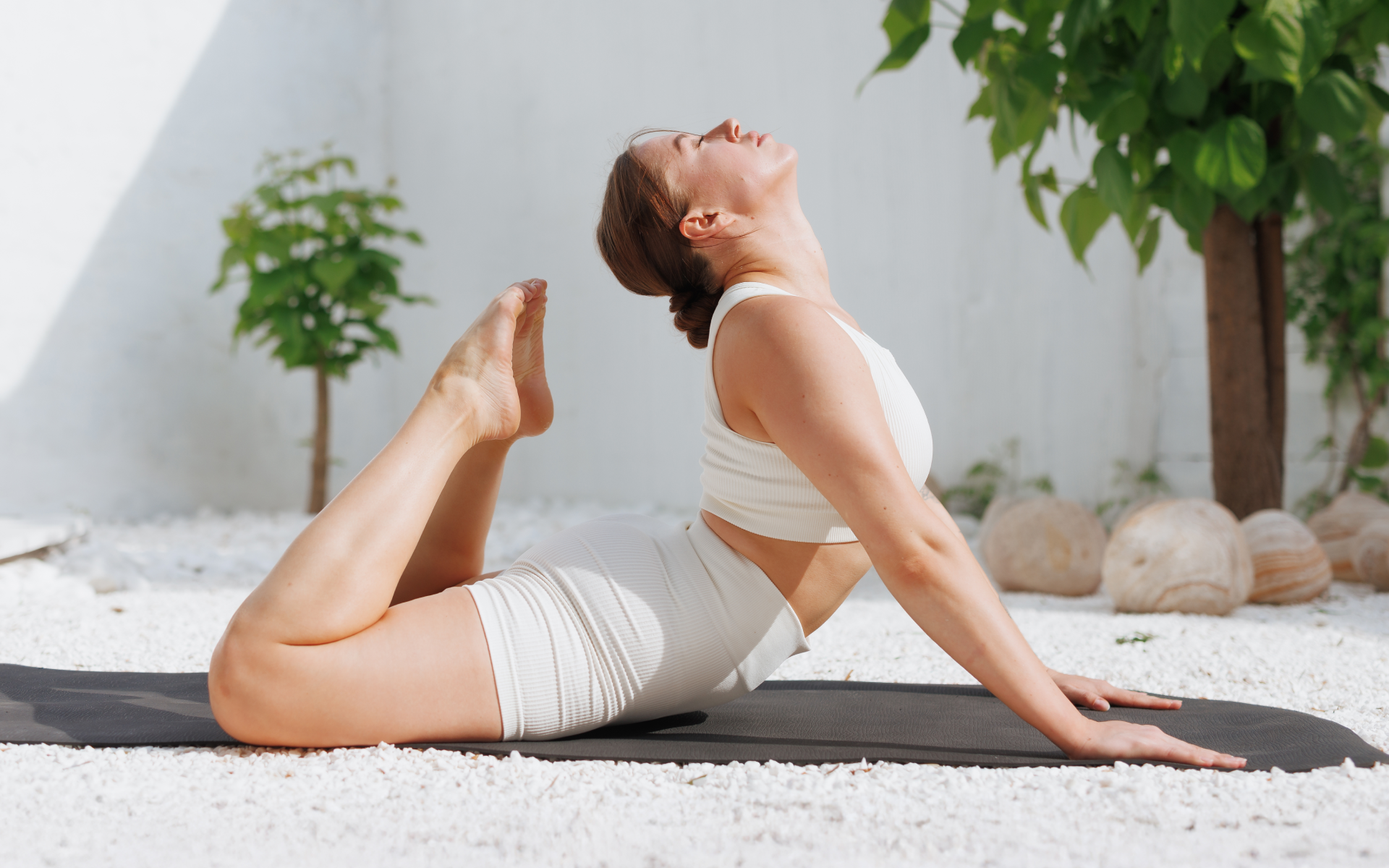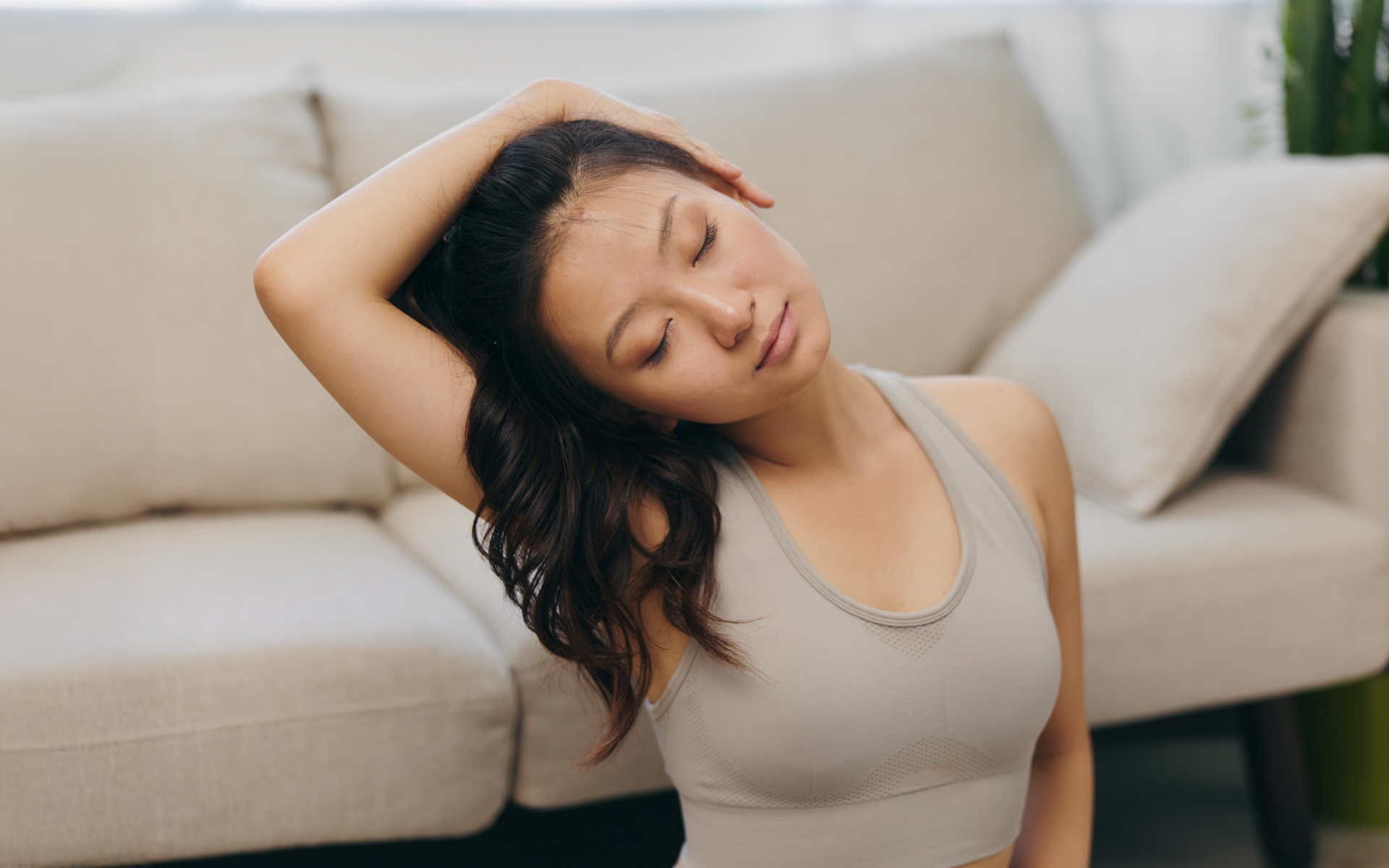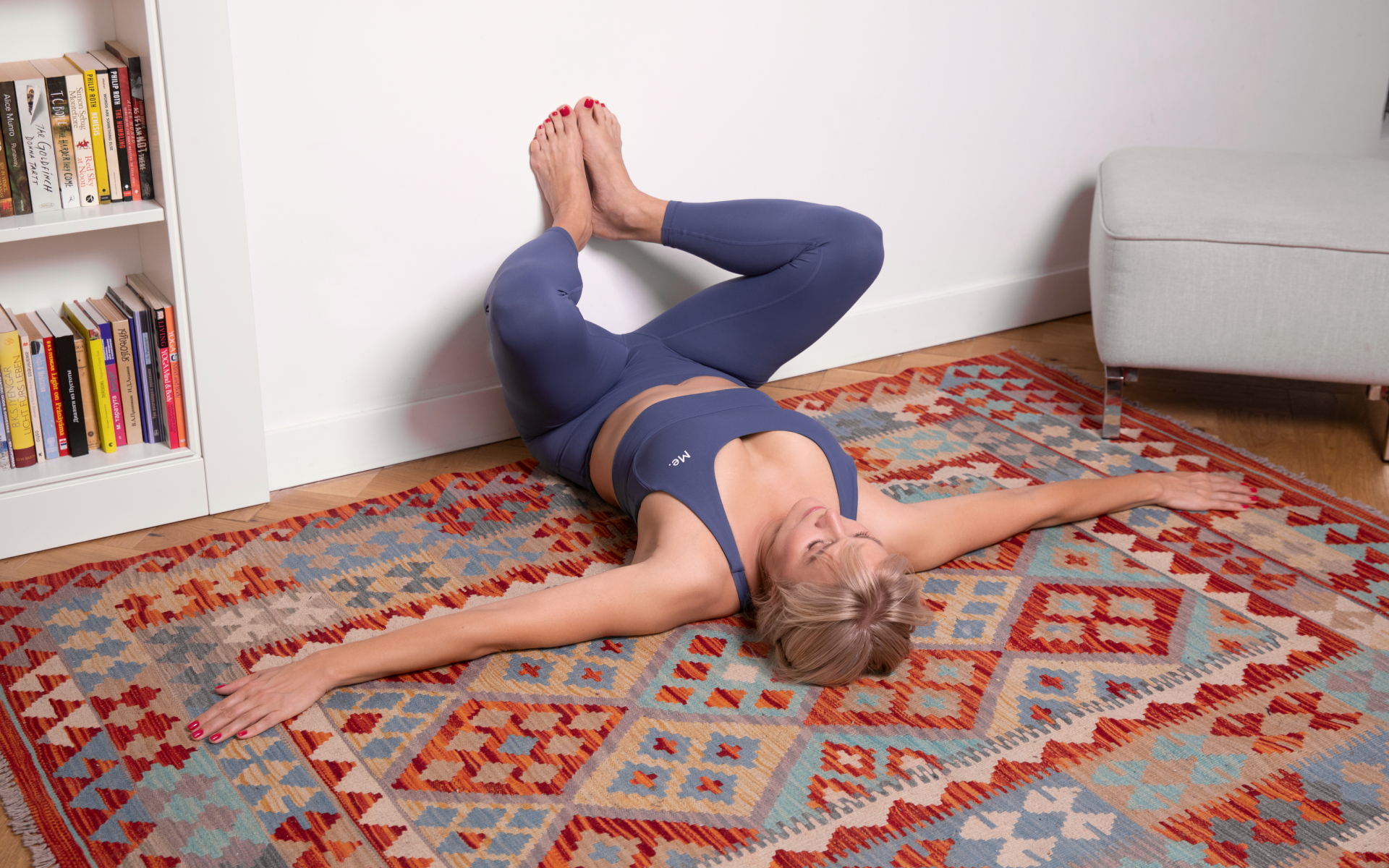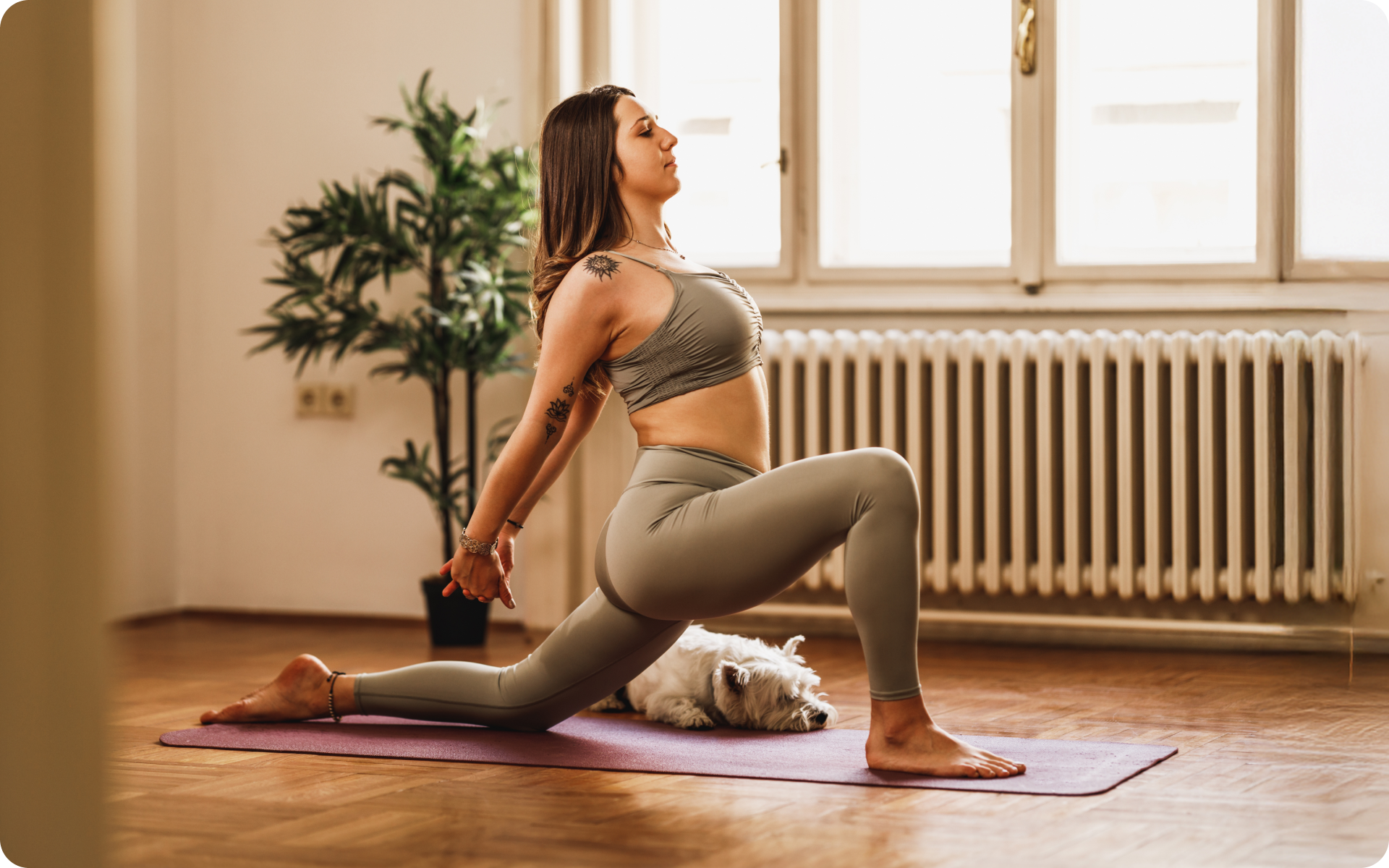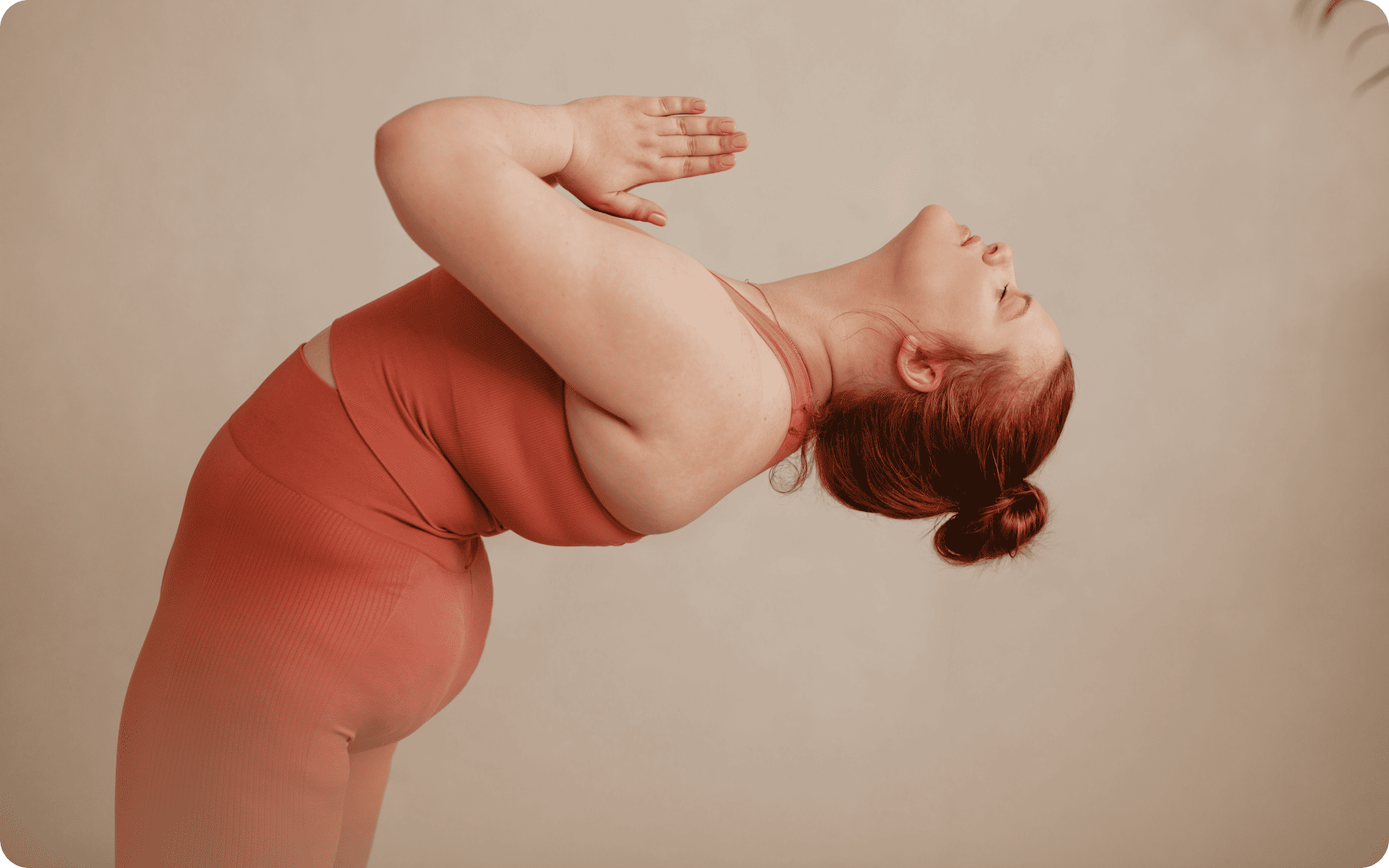Lazy yoga, also known as restorative yoga, is a slow-paced form of yoga that focuses on relaxation and rejuvenation. While it may seem counterintuitive to use this practice for weight loss, incorporating certain poses into your lazy yoga routine can actually help improve fitness and help with weight loss.
The slow pace of lazy yoga makes it accessible for all levels, including beginners and those with injuries or limited mobility. It can also serve as a great complement to more vigorous forms of exercise, such as cardio and strength training.
What Is Lazy Yoga for Weight Loss?
Lazy yoga for weight loss is a gentle and mindful practice that can support your fitness goals by helping to:
- Reduce stress and cortisol levels: High levels of the stress hormone cortisol have been linked to weight gain, particularly in the abdominal area (1). The slower pace of lazy yoga allows the body to relax and enter a state of rest and digest, which reduces stress levels (2).
- Improve sleep quality: Adequate sleep is essential for maintaining a healthy weight. Poor sleep has been linked to increased hunger hormones and cravings for high-calorie foods (3). The calming nature of lazy yoga can help improve sleep quality, leading to better overall health and weight management (4).
- Increase mindfulness: Mindful eating, or paying attention to the sensations of eating without distractions, has been shown to promote healthier food choices and portion control (5). Lazy yoga can help cultivate this sense of mindfulness by focusing on breathing and body awareness during poses.
- Strengthen and tone muscles: While lazy yoga may not be as physically demanding as other forms of exercise, it still offers benefits for strength and muscle tone. Holding poses for longer periods can help build endurance and work smaller stabilizing muscles (6).
- Prevent injury: By moving slowly and mindfully, lazy yoga can help improve flexibility and mobility, which reduces the risk of injury during other physical activities (7).
- You may want to add how breathing contributes to weight loss, as this is a huge benefit of yoga practice – I found a study here from 2014, but you may like to take a deeper look to find something more recent. (https://www.bmj.com/content/349/bmj.g7257)
This isn’t a specific “weight-loss” routine that you might find in a fitness class. Instead, it’s a collection of poses that can be added to your existing lazy yoga routine or used as a starting point for building one.
It’s more about using lazy yoga as a tool to support your weight loss journey, rather than relying on it to burn a certain number of calories. With that in mind, here are eight poses to incorporate into your lazy yoga practice for improved fitness and weight management.
What Is the Best Lazy Yoga Workout for Weight Loss?
The best lazy yoga workout for weight loss is one that’s practiced with a consistent, mindful, and non-judgmental attitude. Remember that everybody is different and progress may look different for each person.
Therefore, rather than pushing yourself to complete a specific number of reps or hold poses for a certain amount of time, focus on how your body feels in each pose and listen to its cues. Here are eight poses to get you started:
1. Cat-Cow Pose (Marjaryasana-Bitilasana)
Cat-cow pose is an excellent sequence for enhancing spinal flexibility, releasing tension, and engaging the core. It promotes better posture, eases back pain, and reduces stress through mindful breathing. This gentle flow is ideal for warming up the body while calming the mind.
Steps to Perform:
- Start on your hands and knees in a tabletop position with your wrists under your shoulders and your knees under your hips.
- On an inhale, tilt your pelvis up, drop your belly toward the mat, lift your chest, and gaze upward (cow pose).
- On an exhale, round your back toward the ceiling, draw your belly button in, and tuck your chin toward your chest (cat pose).
- Continue alternating between cat and cow, moving in sync with your breath, for 6-8 cycles.
Whether you’re a workout beast or just a beginner making your first foray into the world of fitness and dieting – BetterMe has a lot to offer to both newbies and experts! Install the app and experience the versatility first-hand!
2. Extended Puppy Pose (Uttana Shishosana)
Extended puppy pose lengthens the spine and shoulders while gently stretching the chest. This pose helps alleviate back and upper-body tension and promotes relaxation. It’s particularly useful for decompressing the spine and improving flexibility.
Steps to Perform:
Hold the pose for 5-8 deep breaths, focusing on relaxing with each exhale.
- Start in a tabletop position with your hands under your shoulders and your knees under your hips.
- Gradually walk your hands forward while keeping your hips over your knees.
- Lower your chest to the mat, resting your forehead or chin on the floor.
- Extend your arms fully, feeling the stretch through your shoulders and back.
3. Sphinx Pose (Salamba Bhujangasana)
Sphinx pose focuses on strengthening the lower back, opening the chest, and improving spinal extension. It gently activates the core muscles, which fosters focus and calm. This pose also encourages proper alignment and soothes stress.
Steps to Perform:
- Lie flat on your stomach with your legs extended and the tops of your feet pressing into the mat.
- Place your forearms on the mat with your elbows beneath your shoulders and palms flat.
- Press into your forearms to lift your chest while keeping your lower ribs on the mat.
- Relax your shoulders away from your ears and keep a neutral neck.
- Hold for 5-8 breaths, maintaining gentle engagement in your core.
4. Boat Pose (Navasana)
Boat pose is ideal for building strong core muscles and enhancing balance. This challenging posture works the abdominals, spine, and hip flexors. Practicing this pose regularly improves stability, focus, and resilience while also reducing mental fatigue.
Steps to Perform:
- Sit on the floor with your legs extended in front of you.
- Place your hands behind your hips for support as you lean back slightly.
- Lift your feet off the floor, keeping your knees bent, and balance on your sitting bones.
- Extend your arms forward, parallel to the mat, and straighten your legs if possible.
- Engage your core and hold the “V” shape for 5-7 breaths, then release.
5. Plank Pose (Phalakasana)
Plank pose strengthens the entire body, with a specific focus on the core and upper body. It enhances stability, tones the abdomen, and supports posture. Mentally, it builds resilience and sharpens focus, helping to alleviate stress.
Steps to Perform:
- Start in a tabletop position with your wrists under your shoulders and your knees under your hips.
- Step your feet back one at a time, forming a straight line from head to heels.
- Engage your core to prevent sagging hips and keep your gaze slightly forward.
- Spread your fingers evenly and press into your palms for stability.
- Hold for 15-30 seconds, extending the time as your strength improves.
6. Seated Forward Bend (Paschimottanasana)
This pose deeply stretches the hamstrings, spine, and shoulders. It alleviates tension, improves flexibility, and promotes relaxation by soothing the nervous system. It’s also great for calming the mind and improving focus.
Steps to Perform:
- Sit on the floor with your legs extended straight in front of you, keeping your back upright.
- Flex your feet and inhale as you reach your arms overhead.
- Exhale and hinge forward from your hips, reaching toward your feet, ankles, or shins.
- Maintain a straight spine and avoid rounding your back.
- Hold for 5-8 deep breaths, allowing your body to relax into the stretch.
7. Cobra Pose (Bhujangasana)
Cobra pose strengthens the lower back while improving spinal flexibility and opening the chest. This pose enhances posture and promotes better lung expansion, relieving stress and boosting overall energy levels.
Steps to Perform:
- Lie face down on the mat with your legs extended and the tops of your feet on the floor.
- Place your palms under your shoulders and your elbows close to your body.
- Press into your palms and lift your chest while keeping your lower ribs on the mat.
- Relax your shoulders and keep your elbows slightly bent.
- Hold for 5 breaths, then slowly lower back down.
8. Child’s Pose (Balasana)
Child’s pose is a rejuvenating posture that allows the body to rest and recover. It stretches the hips, thighs, and lower back while calming the mind. This pose is perfect for relieving tension and promoting relaxation after a demanding practice.
Steps to Perform:
- Start in a tabletop position with your knees under your hips and your hands under your shoulders.
- Sit back onto your heels, lowering your hips toward your feet.
- Stretch your arms forward or place them alongside your body.
- Rest your forehead on the mat and relax your whole body.
- Breathe deeply and hold for 1-2 minutes, releasing stress with each exhale.
Read more: Plus-Size Yoga: 5 Modified Routines for Beginners
Can You Lose Belly Fat with Lazy Yoga?
Lazy yoga may not be the fastest route to losing belly fat, but it addresses many of the underlying causes that lead to fat accumulation, such as stress, poor sleep, and an unbalanced lifestyle. Think of it as a complement, not a complete solution.
The Role of Stress in Belly Fat
One of the primary culprits behind belly fat is stress. When you’re stressed, your body produces higher levels of cortisol, a hormone that can lead to fat accumulation, particularly around your midsection (1). Lazy yoga is designed to reduce stress by promoting relaxation, calming the mind, and decreasing physiological tension.
By incorporating poses that focus on deep breathing and mindfulness, such as child’s pose (Balasana) or reclining bound angle pose (Supta Baddha Konasana), lazy yoga helps lower cortisol levels. Reduced stress can halt or reverse stress-induced weight gain, which makes it easier to maintain a healthy metabolism and avoid belly fat buildup.
Better Sleep, Better Metabolism
Poor sleep is often linked to weight gain and abdominal fat. Sleep deprivation disrupts hunger-regulating hormones such as ghrelin and leptin, which can lead to overeating or cravings for unhealthy foods (3).
Lazy yoga routines, which emphasize calm and relaxation, promote better sleep quality by preparing the body for rest and calming the nervous system (4). Improved sleep helps your metabolism function more efficiently, which reduces the likelihood of storing excess fat.
Poses such as legs-up-the-wall (Viparita Karani) are particularly effective for improving sleep by enhancing circulation and inducing a sense of deep relaxation.
Mindfulness and Eating Habits
Mindless eating is another factor that can lead to weight gain around the belly. Lazy yoga encourages mindfulness, which extends beyond the mat and into your daily habits. By becoming more attuned to your body’s needs, you can learn to recognize hunger signals and avoid overeating (5).
Mindfulness also fosters healthier eating choices as you’re more conscious of what, when, and how you eat. Over time, this mindful approach reduces overeating and supports long-term weight management.
Gentle Moves That Support Belly Fat Reduction
While lazy yoga itself doesn’t torch calories in the same way as running or aerobics, certain poses can engage the core and support the gentle strengthening of the abdominal muscles.
Poses such as cat-cow (Marjaryasana-Bitilasana) and supported bridge pose (Setu Bandhasana) activate the core muscles in a safe, low-intensity way.
Strengthening these muscles improves posture, enhances stability, and helps tone the abdominal area over time. When combined with a balanced diet and more vigorous physical activities, these benefits can become even more pronounced.
Read more: Best Chair Yoga For Weight Loss: 8 Poses That Work
Is 20 Minutes of Yoga a Day Enough to Lose Weight?
A consistent 20-minute yoga practice is undoubtedly worthwhile. It helps you reconnect with your body, manage stress, and improve strength and flexibility, all of which play vital roles in supporting weight loss. While it may not be enough to replace high-calorie-burning exercises entirely, it can be an integral part of a sustainable, healthy lifestyle that encourages long-term results.
Reasons why BetterMe is a safe bet: a wide range of calorie-blasting workouts, finger-licking recipes, 24/7 support, challenges that’ll keep you on your best game, and that just scratches the surface! Start using our app and watch the magic happen.
Which Yoga Exercise Is Best to Remove Laziness?
Sun salutations are often referred to as the heartbeat of yoga practices. This dynamic sequence involves a series of poses performed in a flow, synchronizing each movement with breath. It’s designed to energize the entire body, awaken the mind, and build internal heat, which makes it one of the most effective tools for overcoming lethargy.
How to Perform Sun Salutations:
- Start in mountain pose (Tadasana), standing tall with your feet together and your hands at your sides.
- On an inhale, stretch your arms overhead (upward salute).
- Exhale and hinge forward from your hips, reaching toward the ground (forward fold).
- Inhale and lengthen your spine while keeping your fingertips on the floor or your shins (halfway lift).
- Exhale and step or jump back into plank pose.
- Lower your body to Chaturanga Dandasana (a low push-up position).
- Inhale and roll forward and lift your chest into upward-facing dog (Urdhva Mukha Svanasana).
- Exhale and push back into downward-facing dog (Adho Mukha Svanasana) and hold for a few breaths.
- Step or jump forward to your hands on an inhale and return to halfway lift.
- Exhale back to forward fold.
- Rise back up into upward salute, inhaling fully.
- Return to mountain pose as you exhale.
Repeat 5-10 cycles for an instant energy boost.
Other poses that can help alleviate laziness and increase energy levels include warrior II (Virabhadrasana II) and chair pose (Utkatasana), both of which engage several large muscle groups and build strength and stamina. It’s also essential to stay hydrated, eat nutritious meals, and get enough sleep for optimal energy levels throughout the day.
Lazy yoga, or restorative yoga, can support weight loss indirectly by reducing stress, improving sleep, and promoting mindfulness, which may prevent overeating. However, it doesn’t burn as many calories as more intense physical activities. These Intermediate Yoga Poses help build strength, improve flexibility, and enhance balance, which makes them perfect for those looking to deepen their practice. Yes, lazy yoga is generally safe for individuals with limited mobility. Its gentler poses can be adapted to suit different levels of flexibility and strength, which makes it accessible and beneficial. Poses such as legs-up-the-wall (Viparita Karani), supported bridge pose (Setu Bandhasana), and reclining bound angle pose (Supta Baddha Konasana) are excellent for improving circulation, reducing stress, and supporting gentle muscle engagement. Yes, practicing lazy yoga regularly can improve flexibility over time. The poses involve gentle stretches that allow your muscles and joints to move more freely without strain. Lazy yoga cannot fully replace traditional workouts if weight loss is your primary goal. It’s best when paired with more active exercise and a balanced diet for effective results in overall fitness and calorie burning.Frequently Asked Questions
Does lazy yoga work for losing weight?
Is lazy yoga safe for people with limited mobility?
What are the best lazy yoga poses for weight loss?
Does lazy yoga improve flexibility?
Can lazy yoga replace traditional workouts?
The Bottom Line
Lazy yoga isn’t just about physical postures, it also incorporates other aspects of a balanced lifestyle to support overall wellness and vitality. Incorporating these practices into your daily routine can help you combat laziness, enhance your well-being, and promote a healthier relationship with yourself. So instead of viewing lazy yoga as a threat to weight loss goals, you should think of it as a holistic approach to support your mind, body, and overall health.
DISCLAIMER:
This article is intended for general informational purposes only and does not serve to address individual circumstances. It is not a substitute for professional advice or help and should not be relied on for making any kind of decision-making. Any action taken as a direct or indirect result of the information in this article is entirely at your own risk and is your sole responsibility.
BetterMe, its content staff, and its medical advisors accept no responsibility for inaccuracies, errors, misstatements, inconsistencies, or omissions and specifically disclaim any liability, loss or risk, personal, professional or otherwise, which may be incurred as a consequence, directly or indirectly, of the use and/or application of any content.
You should always seek the advice of your physician or other qualified health provider with any questions you may have regarding a medical condition or your specific situation. Never disregard professional medical advice or delay seeking it because of BetterMe content. If you suspect or think you may have a medical emergency, call your doctor.
SOURCES:
- Stress and abdominal Fat: Preliminary Evidence of Moderation by the Cortisol awakening Response in Hispanic Peripubertal Girls (2011, nih.gov)
- How Does Yoga Reduce Stress? A Clinical Trial Testing Psychological Mechanisms (2023, nih.gov)
- Sleep duration is associated with healthy diet scores and meal patterns: results from the population-based EpiHealth study (2020, nih.gov)
- Impact of long term Yoga practice on sleep quality and quality of life in the elderly (2013, nih.gov)
- Mindful Eating, General Mindful Awareness, and Acceptance as Predictors of Weight Loss (2021, nih.gov)
- Yoga Helps Preserve Muscle Mass in Older Women, Study Says (2017, today.uconn.edu)
